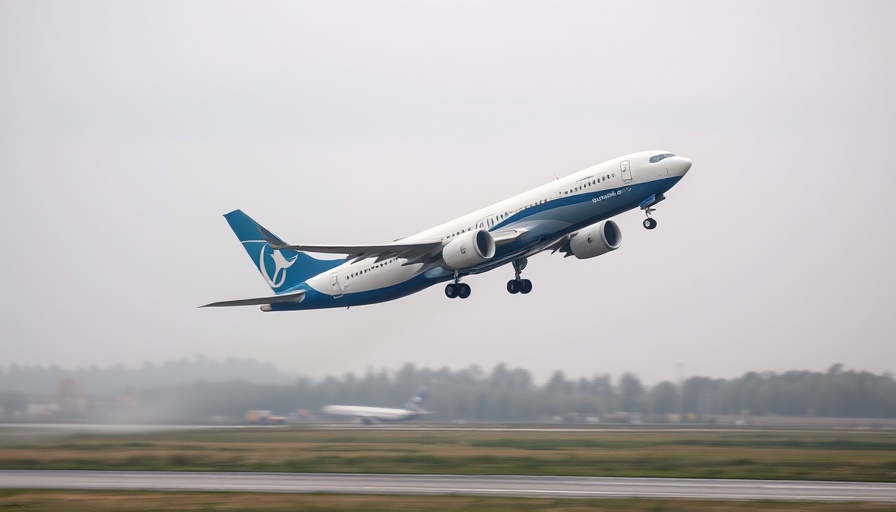
Boeing's Growth in 2025: A Positive Shift for the Aerospace Industry
After facing a series of challenges over the past few years, Boeing is making a notable comeback in 2025. The U.S. aerospace giant announced the delivery of 280 aircraft in the first half of 2025, a remarkable 60% increase from the 175 deliveries during the same span in 2024. This surge not only highlights the company's recovery trajectory but also signals a robust demand for its aircraft in an evolving market.
Key Factors Contributing to Production Increases
The increase in Boeing deliveries includes 209 of the popular 737 series, with a production rate capped at 38 aircraft per month. This limitation was put in place after a production shutdown following a safety incident, illustrating the stringent oversight the aerospace sector faces. However, an upcoming FAA review may lift this cap to 47 units monthly, paving the way for further growth.
In addition to the 737, the Boeing 787 also saw a significant uptick, with production nearly doubling compared to last year. This resurgence could be a reflection of the global recovery in air travel, which has been a core driver behind the aviation industry's resurgence after the pandemic.
Importance of Deliveries and New Orders
Deliveries are crucial not just to Boeing's financial health but also to the broader aerospace market. They serve as a key indicator of buyer confidence and company performance. For instance, June 2025 alone accounted for 60 aircraft deliveries, marking the highest monthly total since a series of difficulties impacted the company.
Additionally, Boeing secured impressive new orders in June, including a significant order of 32 aircraft from British Airways. Such contracts underscore the continuing demand for new aircraft, highlighting a positive trend for the company's future.
Boeing's Strategic Leadership Under Kelly Ortberg
Change has also come from within Boeing’s leadership following the appointment of Kelly Ortberg as CEO. His strategic emphasis on safety and operational efficiency has resulted in a stock increase of over 20%. Analysts have responded favorably, indicating a "Moderate Buy" rating for Boeing shares, which reflects confidence in Ortberg’s turnaround efforts.
As Boeing continues its upward climb in 2025, the company’s efforts to improve production rates and safety protocols could herald a brighter chapter for the aerospace and defense sector, providing hope for industry revitalization amid challenges.
 Add Row
Add Row  Add
Add 




Write A Comment